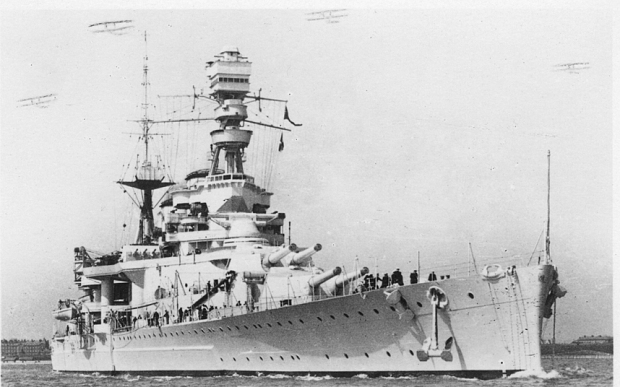Two of the most celebrated British wartime ships, HMS Repulse and HMS Prince of Wales, sunk off the coast of Malaysia in 1941. There also lies the resting place of more than 830 Royal Navy sailorswho sank with them.
One can listen to the dull reverberations and explosions from the surface that indicates that the scavengers are ripping off metal from the body of the ships. In recent months the number of such incidents have increased dramatically and people those who know about the wrecks are trying their best to protect them from the scavengers.
Stuart Shaw, who owns the TechThailand dive company, said that they saw the wrecks are being stripped off for metal when the first dived in the region in May 2013. And to protect the wrecks from being scavenged they have removed propellers from both the ships between September 2012 and May 2013.
He said that he has repeatedly chased off the scavengers but they keep coming back for scar metal. And he fears that there won’t be much left of the ship in next ten years if they are not protected. The ship’s metal proved to be a great bounty for the scavengers as they could sell a ton of phosphor bronze for £3,800 a ton, with each of the eight propellers weighing an estimated 15 tonnes. However, with no more phosphor bronze in the shape of propellers the scavengers have now started taking other precious metals from the ship’s body such as brass, copper, high grade aluminium, and steel that are available in the propeller shafts.
In May a video of HMS Repluse was taken that clearly showed a White Ensign of the Royal Navy, on a propeller shaft, that was placed by the divers as a mark of respect for the dead. However, a recent footage shows that both the shaft and the White Ensign missing. The footage also showed steel plating peeled outwards. Mr Shaw said that until the salvage work began the wrecks were in a good condition, however, now there is loose plating and there are many areas from where rivets have been removed.
Both the vessels went down just days after the Pearl Harbour attack by the Japanese. The ships were sent to Far East to resist the invasion of the Malayan peninsula and the ultimate occupation of Singapore. However, the disaster stuck when the fleet was attacked by a wave of Japanese aircrafts. Eight torpedoes were fired on the ships to sink them. Both these ships became the first ships in the history of war to be sunk solely by air power, thereby rewriting the battle strategies.
The wrecks are still a property of the British crown are supposed to be protected under the Protection of Military Remains Act 1986. The bell of the HMS Prince of Wales was removed by the Royal Navy in 2002 and is displayed in the Merseyside Maritime Museum in Liverpool.
James Wren, a former Royal Marine, who survived the sinking, said that protecting the wrecks is a “vast job”. Another Repulse survivor, Maurice Pink, who is also the chairman of the Force Z Survivors Association said, “You just can’t stop it unless you patrol all the time”, “If they want to dive down and pinch something they are going to. You can’t prevent robbers robbing a bank if there’s no one there to stop them.”
In May, 2014 the Ministry of Defence confiscated a large number of stolen parts from HMS Repulse and is working closely with the foreign governments to prevent “inappropriate activity” on the wrecks, The Telegraph reports.
